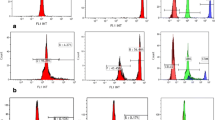Abstract
Chronic granulomatous disease (CGD) is a primary immunodeficiency disease which results from absence of the NADPH oxidase in the professional phagocytic cells [13] neutrophils, monocytes, macrophages and eosinophils. Deficiency of this oxidase renders the patient liable to infection by bacteria and fungi, and, as the name of the disease suggests, to chronic granulomatous inflammation. These patients present with a great variety of infections and other complications of their disease, which often tax the clinical and therapeutic skill of the doctors responsible for their care. Collectively we look after, or advise on the management of, over 100 of these subjects, and have developed experience in the diagnosis and management of the infections and other clinical problems they present. We thought that it might be timely to provide guidelines for their management based upon this experience. The numbers of patients are still relatively small, and the clinical presentations very varied, so it is immpossible to provide clear statistical proof of the veracity of this advice. It does, however, reflect the working practise of the physicians caring for many of these patients in Europe.
Similar content being viewed by others
Abbreviations
- CGD:
-
chronic granulomatous disease
- NADPH:
-
nicotinamide adenine dinucleotide phosphate; reduced form
- NBT:
-
nitroblue tetrazolium
References
Cohen MS, Isturiz RE, Malech HL, Root RK, Wilfert CM, Gutmann L, Buckley RH (1981) Fungal infection in chronic granulomatous disease. Am J Med 71:59–62
Ezekowitz A (1991) Interferon gamma for chronic granulomatous disease. N Engl J Med 325:1516
Ezekowitz RAB, Dinauer MC, Jaffe HS, Orkin SH, Newburger PE (1988) Partial correction of the phagocyte defect in patients with X-linked chronic granulomatous disease by subcutaneous interferon gamma. N Engl J Med 319:146–151
Ezer G, Soothill J (1974) Intracellular bactericidal effects of rifampicin in both normal and chronic granulomatous disease polymorphs. Arch Dis Child 4:463–466
Hoger PH, Seger RA, Schaad UB, Hitzig WH (1985) Chronic granulomatous disease: uptake and intracellular activity of fosfomycin in granulocytes. Pediatr Res 19:38–44
Huizinga TWJ, Van der Schoot CE, Roos D, Weening RS (1991) Induction of neutrophil FC-γ receptor 1 expression can be used as a marker for biologic activity of recombinant interferon-γ in vivo. Blood 77:2088–2090
The International Chronic Granulomatous Disease Cooperative Group (1991) A controlled trial of interferon gamma to prevent infection in chronic granulomatous disease. N Engl J Med 324:509–516
Margolis DM, Melwick DA, Alling DW, Gallin JL (1990) Trimethoprim-sulfamethoxazole phrophylaxis in the management of chronic granulomatous disease. J Inf Dis 162:723–726
Mouy R, Fischer A, Vilmer E, Seger R, Grisecelli C (1989) Incidence, severity and prevention of infections in chronic granulomatous disease. J Pediatr 114:555–560
Mouy R, Seger R, Bourquin JP, Veber F, Blanche S, Griscelli C, Fischer A (1991) Interferon gamma for chronic granulomatous disease. N Engl J Med 325:1516–1516
Muhlebach TJ, Gabay J, Nathan CF, Erny C, Dopfer G, Schroten H, Wahn V, Seger RA (1992). Treatment of patients with chronic granulomatous disease with recombinant human interferon-gamma does not improve neutrophil oxidative metabolism, cytochrome b558 content or levels of four antimicrobial proteins. Clin Exp Immunol 88:203–206
Sechler JMG, Malech HL, White CJ, Gallin JL (1988) Recombinant human interferon-g reconstitutes defective phagocyte function in patients with chronic granulomatous disease of childhood. Proc Natl Acad Sci USA 85:4874–4878
Segal AW (1989) The electron transport chain of the microbicidal oxidase of phagocytic cells and its involvement in the molecular pathology of chronic granulomatous disease. J Clin Invest 83:1785–1793
Seger R, Baumgartner S, Tiefenauer L, Gmunder F (1981) Chronic granulomatous disease: effect of sulfamethoxazole/trimethoprim on neutrophil microbicidal function. Helv Paediatr Acta 36:579–588
Weening RS, Kabel P, Pijman P, Roos D (1983) Continuous therapy with sulfamethoxazole-trimethoprim in patients with chronic granulomatous disease. J Pediatr 103:127–130
Woodman RC, Erickson RW, Rea J, Jaffe HS, Curnutte JT (1992) Prolonged recombinant interferon-gamma therapy in chronic granulomatous disease: evidence against enhanced neutrophil oxidase activity. Blood 79:1558–1562
Author information
Authors and Affiliations
Rights and permissions
About this article
Cite this article
Fischer, A., Segal, A.W., Seger, R. et al. The management of chronic granulomatous disease. Eur J Pediatr 152, 896–899 (1993). https://doi.org/10.1007/BF01957525
Received:
Accepted:
Issue Date:
DOI: https://doi.org/10.1007/BF01957525




